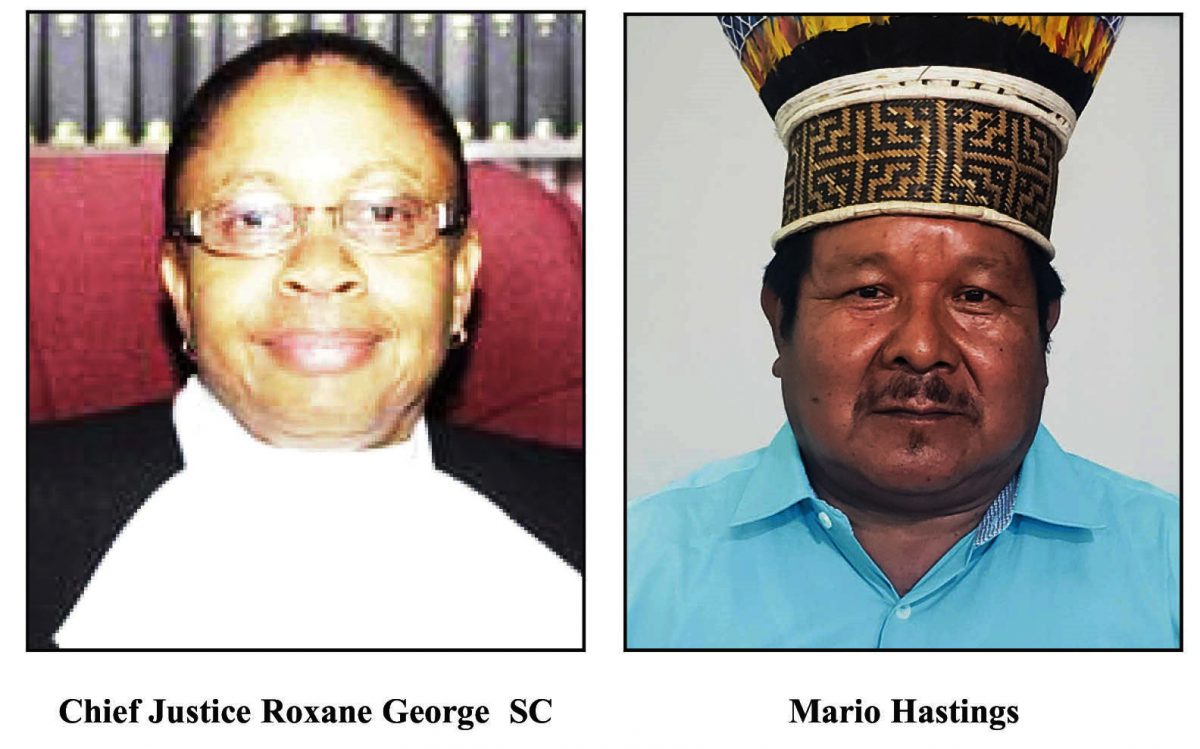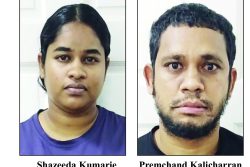While the Akawaio and Arekuna communities have hailed the Chief Justice’s (CJ) ruling confirming their rights to ancestral lands, they are dissatisfied with her finding that those rights are not exclusive to them.
Their prime contention is that it was an error for the Judge to have found that notwithstanding proof of their occupation through substantial connection from time immemorial, the finding was still that it is the Government which possesses ultimate title.
To this end, they are challenging the ruling, asking the Guyana Court of Appeal to amend that aspect of the decision, or completely set it aside.
They are contending that acting Chief Justice Roxane George SC, made a grave error by refusing to recognize that their aboriginal title is to be to the exclusion of all others, despite finding that they were the exclusive occupants of the subject land at the time sovereignty was acquired by the State.
In particular, they argue that the CJ erred in law by paradoxically holding that the subsequent occupation of the lands by State agencies, the Church and private persons rendered their (the Appellants’) occupation nonexclusive, while simultaneously holding that adverse possession and the system of titling in Guyana was not relevant in respect of communal ownership of land.
For 24 years, communities that fall under the Upper Mazaruni District Council (UMDC) have been engaged in a legal battle with the State to recognize their land rights; seeking among other things, declaration of exclusive ownership.
In her ruling of December 16th last, Justice George declared that the Akawaio and Arekuna—the two Amerindian tribes at the centre of the litigation—do have rights to the land in question; proving that they have—from time immemorial—continuously occupied and held communal/aboriginal title.
She would, however, go on to find that those rights are subject to State lands/title and, therefore, could not be regarded as being to the exclusion of all others.
In fact, the Judge pointed out that while historically the lands may have only been occupied by the tribes, it is not so today. On this point she noted that at the time witnesses testified during the trial, there were other people occupying those lands.
She said, too, that while they did have inalienable right to the lands, aboriginal title/property could be alienated to the State.
The six Appellants in whose names the communities’ appeal was filed, are of the view that the Judge erred in law and in fact by finding that the Akawaio and Arekuna Peoples’ communal aboriginal title became non-exclusive as a result of the subsequent grant of titles by the State, without there being any evidence of how the State acquired the authority to grant those titles.
They have voiced their discontent, too, stating that the Court erred in refusing to grant them compensation for what they call “impairment” of their rights; particularly with what they said was the CJ’s paradoxical finding that their aboriginal title was subject to grants of titles by the State and also that there was no impairment of their rights.
But the Appellants argue that the Judge erred in that finding, despite finding that the Government’s testimony suggested the issuance and operation of mining concessions within the subject land, without the permission from the Akawaio and Arekuna Peoples.
Against this background, they say that the Chief Justice erred in refusing to grant a declaration that the Indigenous Peoples of Guyana, including themselves, “are entitled individually and collectively to the equal and undiminished protection of the provisions of the Constitution… including but not limited to the fundamental rights and freedoms described therein.”
They are contending that in particular, she erred by failing to “interpret the constitutionally protected aboriginal property and related rights vested in the Akawaio and Arecuna Peoples in accordance with international human rights law, including pursuant to Articles 39(2) and 154A of the Constitution and more generally established precedent on the right to protection of the law.”
Other errors which they are contending the Chief Justice made were in relation to her denial of relief that there was no evidence they had been deprived protection of the Constitution, even though she found that the State had no permission from them to issue mining concessions.
They are saying that she also erred in her finding that several provisions of the Amerindian Act did not violate their rights under the Constitution and did not amount to a deprivation of property; notwithstanding her finding of their relationship with and occupation of the subjects’ lands.
According to the Appellants, Justice George also erred in her holding that there was no evidence to support their claim that prior to the cession of the territory to Great Britain in 1803, the Akawaio and Arekuna Peoples enjoyed under Roman Dutch statute and law in effect, an aboriginal title to the same area which was vested and remains vested in the membership of their indigenous communities, notwithstanding that Roman-Dutch property law remains the foundation of Guyanese real property law and should therefore be taken judicial notice of.
Against this background they argue that the State does not hold radical title to lands, though it retains sovereignty over the lands.
The listed Appellants of Upper Mazaruni River, Region 7, on behalf of the two tribes are: Van Mendason, Czar Henry, Anderson Hastings, Lawrence Anselmo, Dutchell Isaacs and Norma Thomas.
They are being represented by attorney Nigel Hughes.
Meanwhile, the matter is brought against the State with the Attorney General listed as defendant.
Background
Chairman of the UMDC and Toshao of Kato Mario Hastings had previously lamented to Stabroek News, the slow progression of the matter since final arguments were heard back in 2017. They were told that the delay is due to a backlog of cases in the court.
Indigenous People’s activist and native of Phillipai Village Laura George had stressed that their fight for recognition was based on the fact that they wanted it to be determined that they are the real owners of lands, for which mining permits are being given.
The leaders had expressed their belief that after the two decades and a half that have elapsed, the matter should have already been put to rest rather than being dragged out.
Deputy Chairman of the UMDC and Toshao of Kamarang Lemuel Thomas had said that the land rights was one of the burning issues they were tasked with resolving and that their villagers were pressing for results.
The UMDC leaders had said that more harm was being inflicted on their communities through both renewals and issuance of new mining concession permits.
Hasting had said in the Upper Mazaruni they received separate land titles in 1991 but the lands that were given have little to no cultural meaning and large swathes of their traditional land were kept as state property.
According to Hastings, this was what led people living in the area to take the case to court seeking a judicial declaration confirming their rights to the land.
He noted that although international human rights bodies, such as the United Nations Committee on the Elimination of Racial Discrimination, have called upon Guyana to legally recognise the lands, territories and resources that indigenous peoples have traditionally owned or occupied, this was not done.
He had argued that that the decades-long denial of their land rights violated their constitutional rights as per the constitution of Guyana.









